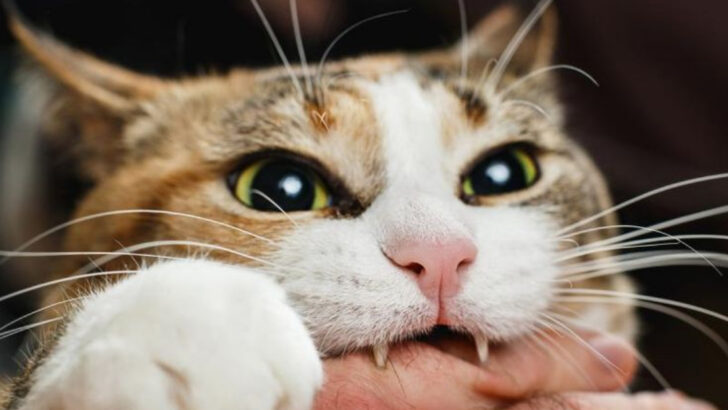That adorable tail twitch?
It might be a warning.
Cats are experts at mixed signals. One moment they’re purring in your lap, the next they’re launching a sneak attack on your ankle. We laugh it off, call them quirky, and post it online—but some of these habits aren’t just odd. They’re red flags.
Your cat isn’t being “extra” for no reason.
Sometimes, what looks like play is actually stress, frustration, or even a brewing health issue.
From the slow blink to the midnight zoomies, we’re breaking down 14 seemingly cute behaviors that could mean your cat is low-key plotting chaos—or asking for help.
Purring Excessively

Purring is often seen as a sign of contentment, but excessive purring can indicate distress. While a gentle rumble may soothe, constant purring might mask pain or anxiety. Cats purr for various reasons, including signaling discomfort or illness. Imagine a feline friend purring persistently, even when alone; this could hint at an underlying issue. Observing changes in purring patterns can help detect problems early. For instance, purring loudly after a fall could suggest injury rather than happiness. Thus, it’s crucial to notice when this soothing sound turns into a constant symphony.
Aggressive Kneading

Kneading is a charming behavior, reminiscent of kittens nursing. However, when a cat kneads aggressively, it might signal underlying tension or dominance issues. Picture a cat pressing its paws forcefully into your lap, claws extended; this could mean more than simple affection. In some cases, cats knead to mark territory, using scent glands in their paws. This behavior, though rooted in comfort, can become a sign of stress or anxiety. Monitoring the intensity and frequency of kneading can reveal insights into your cat’s emotional state, helping address potential problems early.
Excessive Meowing

Cats communicate through meows, but excessive vocalization can be a cry for attention or a sign of distress. Imagine a Siamese cat persistently meowing, echoing through the house, even when needs are met. Such behavior might suggest loneliness or discomfort. Cats may vocalize excessively due to hunger, thirst, or the need for companionship. In other cases, it could indicate medical issues requiring prompt attention. Understanding the context and frequency of meowing is crucial in addressing these vocalizations, ensuring your feline friend’s well-being remains intact.
Sudden Zoomies
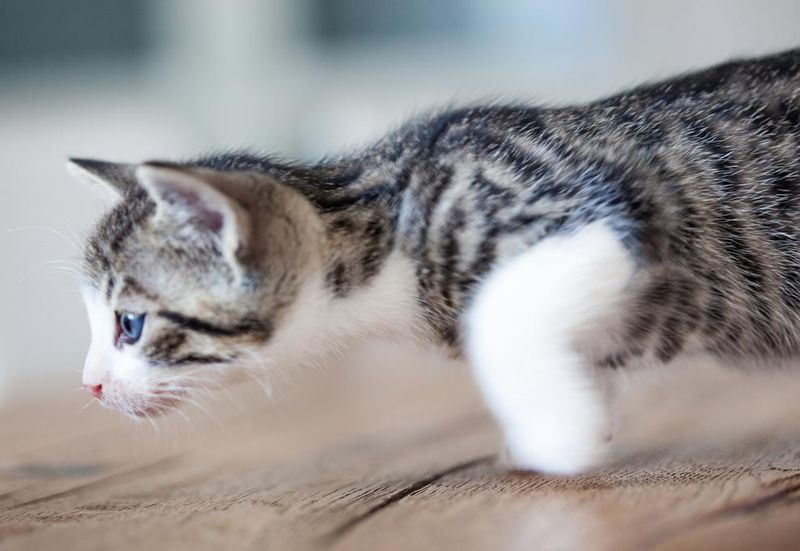
The sudden burst of energy, often called “zoomies,” can be entertaining but may also reflect underlying stress or diet issues. Picture a cat dashing through the house at lightning speed, seeming possessed by an invisible force. While zoomies are natural, frequent episodes might suggest boredom or anxiety. Providing engaging activities and a balanced diet can help manage these unpredictable sprints. In some cats, zoomies occur after using the litter box, possibly indicating discomfort. Understanding the triggers behind these high-speed antics ensures your cat’s happiness and health.
Tail Flicking

A flicking tail can be misleadingly cute but often signals irritation. Imagine a calico cat lounging with its tail twitching rapidly; this could mean it’s not as relaxed as it appears. Cats use tail flicks to express annoyance or agitation. If ignored, this behavior might escalate to aggression. Observing the context, such as during petting or while watching birds, provides clues to your cat’s mood. Addressing these signals helps prevent unwanted interactions, ensuring a peaceful coexistence. Tail communication is subtle yet vital in understanding feline feelings and maintaining harmony.
Biting During Play
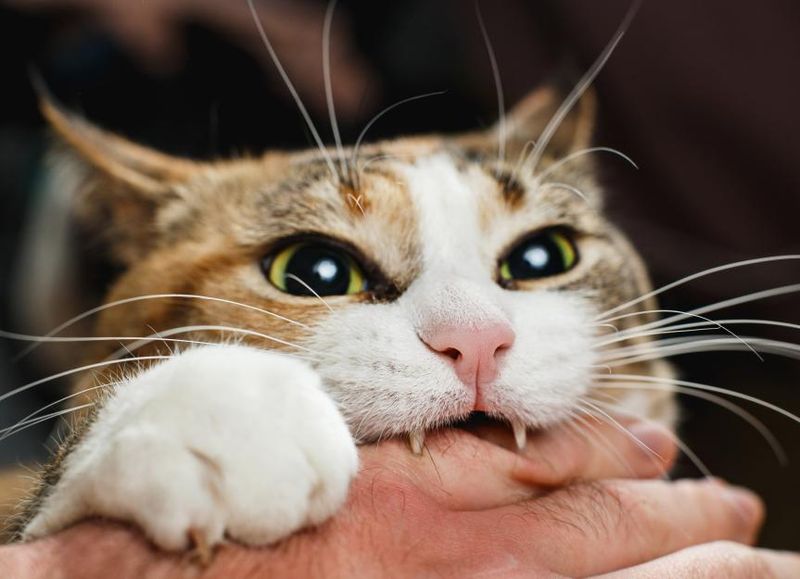
Playful nibbles can escalate if not addressed, turning into a problematic behavior. Picture an energetic kitten biting during play, initially gentle but gradually more intense. This behavior, while seemingly adorable, might develop into aggression if unchecked. Cats often bite to express excitement, but they need to learn boundaries. Reinforcing gentle play with toys rather than hands discourages biting. Noticing a shift in biting intensity helps in redirecting energy and ensuring safe interactions. Encouraging appropriate playtime fosters a positive environment, curbing potential issues.
Ignoring Litter Box
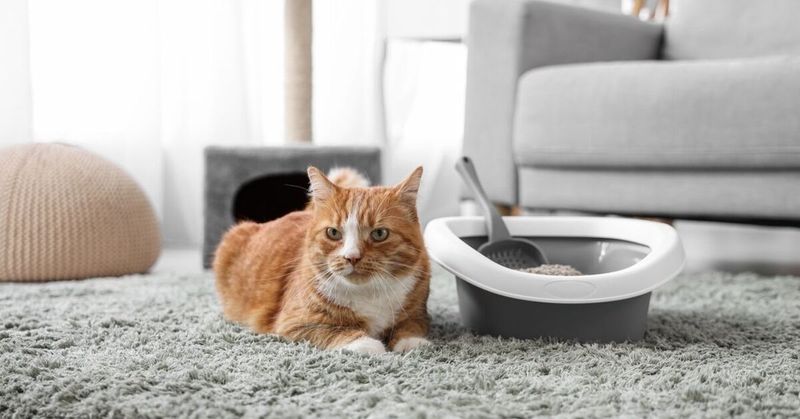
Ignoring the litter box can indicate medical or emotional issues. Imagine a tabby cat standing beside a pristine litter box but refusing to use it. Such behavior might suggest discomfort, stress, or dissatisfaction with the box’s cleanliness. Cats value hygiene, and a dirty box can deter them. Additionally, changes in household dynamics or health problems may influence this behavior. Monitoring litter box habits and ensuring a clean environment supports your cat’s well-being. Addressing these signs prevents further complications, maintaining both physical and emotional health.
Over-Grooming
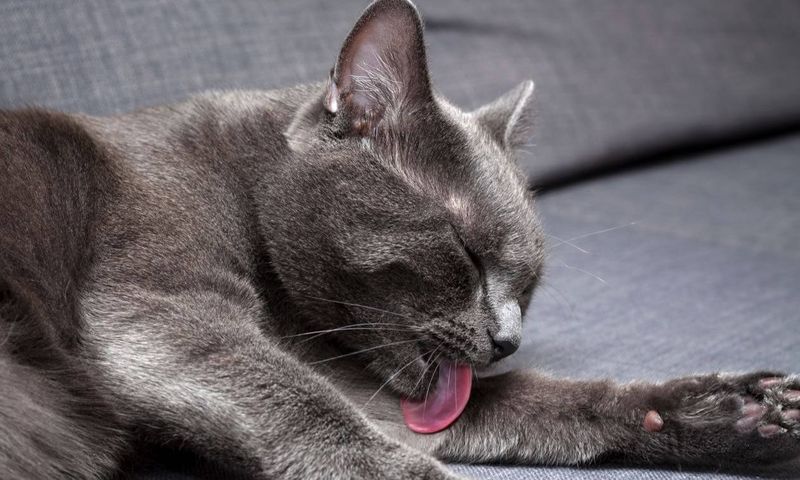
Over-grooming may seem like a quest for cleanliness but can signify stress or allergies. Picture a sleek black cat grooming excessively, forming bald patches on its belly. This compulsive behavior might indicate skin irritations or anxiety. Cats groom to soothe themselves, but excessive licking could lead to skin damage. Identifying triggers, such as environmental changes or allergens, helps address the root cause. Providing a calming environment and seeking veterinary advice ensures your cat maintains a healthy coat and peace of mind. Recognizing these patterns is vital for their comfort.
Hiding Frequently
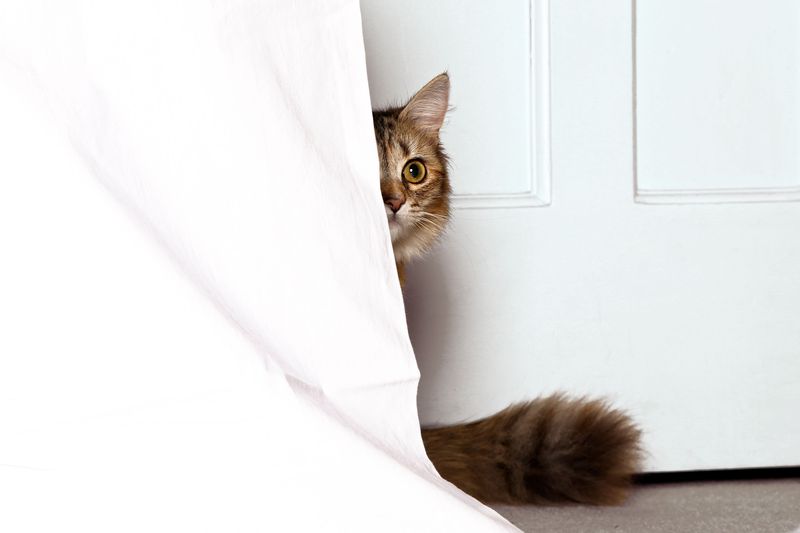
Cats enjoy solitude, but frequent hiding can indicate fear or illness. Imagine a tortoiseshell cat retreating under a bed, spending more time in seclusion than interacting. This behavior might signal discomfort or stress. Cats hide to feel safe, yet excessive hiding could suggest underlying health issues or environmental stressors. Providing secure spaces and monitoring social interactions helps assess their emotional state. If hiding increases, consulting a veterinarian ensures your cat’s health and happiness remain priorities. Balancing solitude with companionship fosters a secure and loving home.
Staring Intensely
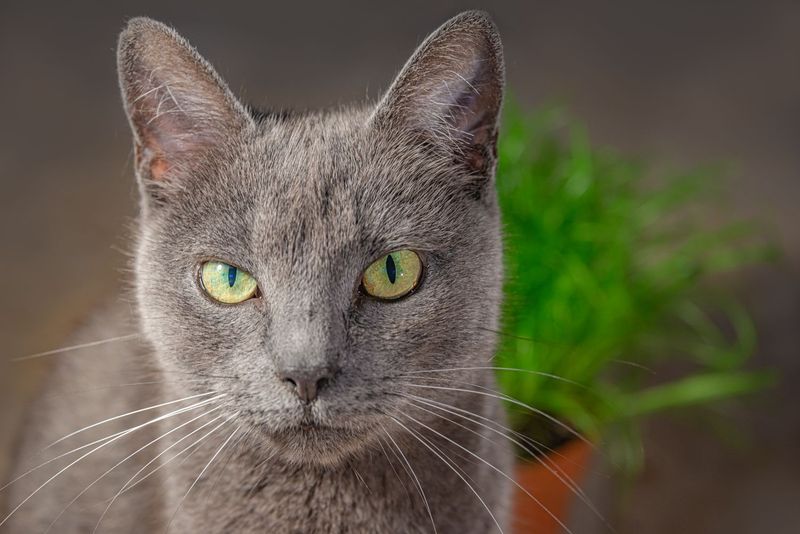
A cat’s intense stare might seem endearing but can imply territorial or hunting instincts. Picture a ginger cat focusing sharply on an unseen target. While this gaze reflects curiosity, it might also indicate a readiness to pounce. Cats communicate through eye contact, and an unwavering stare could challenge or intimidate. Recognizing this behavior aids in understanding their boundaries, preventing potential conflicts. Providing stimulating toys or activities redirects their focus. Understanding these feline signals enhances communication, promoting harmony in shared spaces.
Bringing “Gifts”
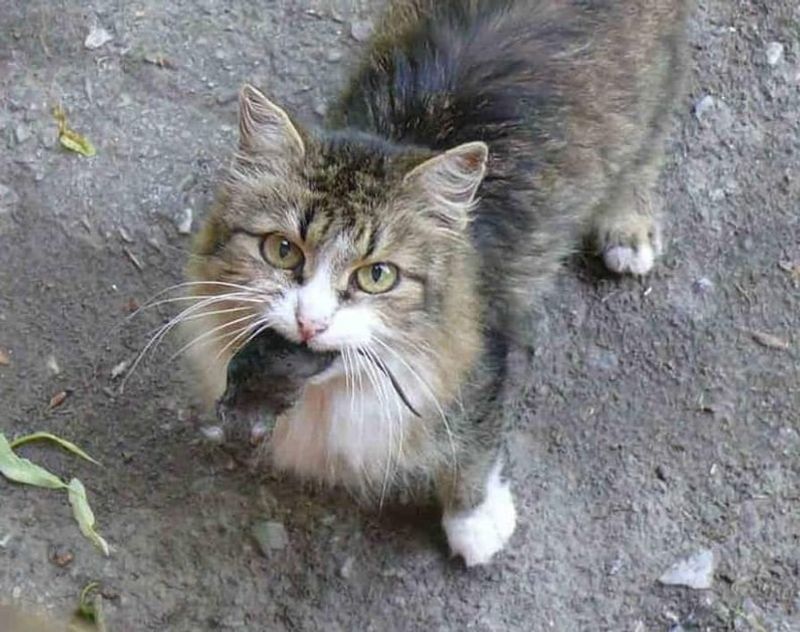
Cats bring “gifts” as a display of hunting prowess, but this behavior can be unsettling. Imagine a tabby cat proudly presenting a mouse at your feet. While this act stems from instinct, it can signify boredom or a desire to nurture. Encouraging indoor play and providing hunting-like toys satisfies these natural urges. Understanding the intent behind these offerings helps manage outdoor excursions and interactions with wildlife. Though well-intentioned, these “gifts” require careful handling to maintain balance between appreciation and control.
Overeating
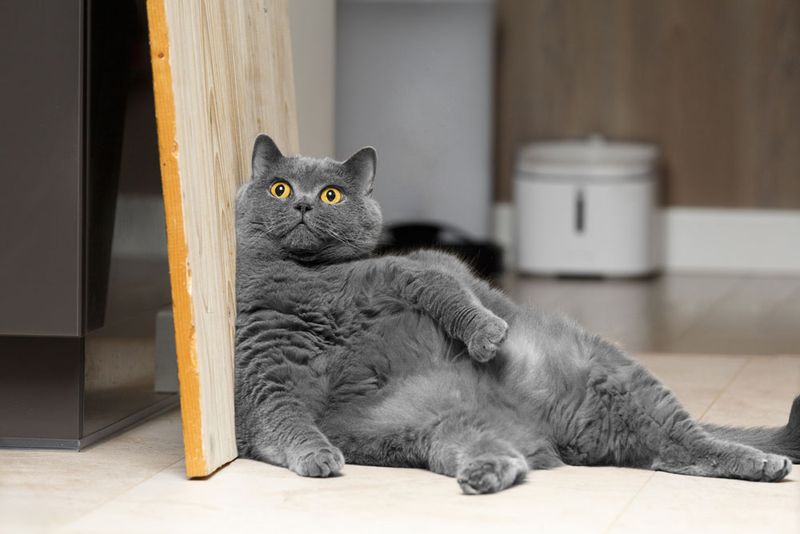
Overeating is often mistaken for a good appetite but can lead to obesity and health issues. Picture a chubby British Shorthair relaxing near an overflowing bowl. While eating is a basic necessity, excessive consumption might indicate boredom or stress. Cats may eat more if food is readily available, leading to weight concerns. Monitoring portion sizes and providing structured meals helps regulate their diet. Addressing these eating habits ensures a healthy lifestyle, reducing the risk of obesity-related problems. Balancing indulgence with moderation supports a cat’s long-term wellness.
Scratching Furniture
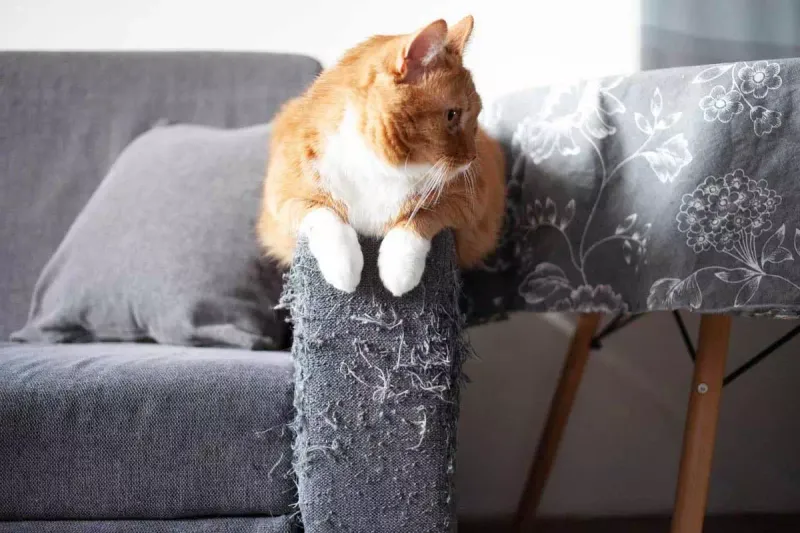
Scratching furniture is a natural behavior but can be destructive. Imagine a determined Persian cat sharpening its claws on your new couch. This instinctual activity helps cats maintain claw health and mark territory. Providing appropriate scratching posts and pads redirects this behavior, preserving household items. Recognizing scratching as a need rather than mischief changes the approach to solutions, ensuring harmony. Encouraging desirable scratching habits enhances living spaces while meeting feline needs. Understanding this behavior prevents unnecessary frustration, fostering a respectful cohabitation.
Climbing Curtains
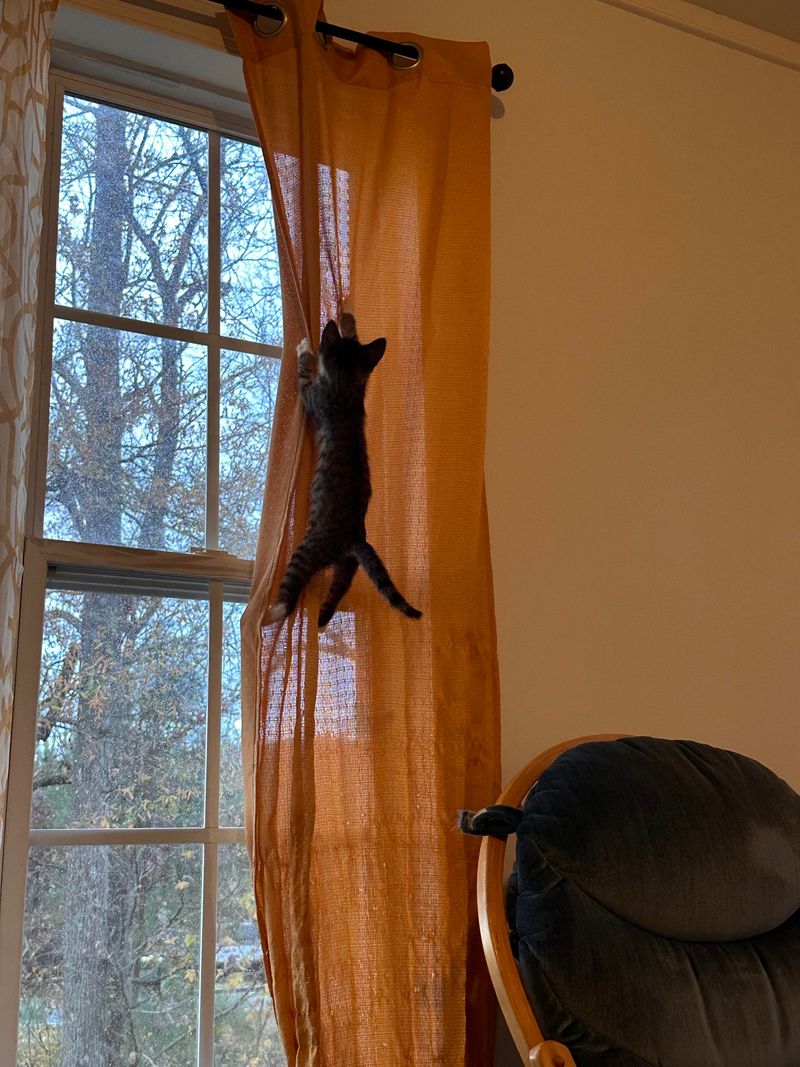
Climbing curtains can be amusing yet speaks to a cat’s need for exploration. Picture a Bengal cat scaling your elegant drapes with agility. While this showcases their adventurous spirit, it might also indicate boredom or lack of stimulation. Providing climbing alternatives like cat trees or shelves satisfies this urge. Observing your cat’s climbing habits offers insights into their energy levels and environmental needs. Meeting these needs with engaging setups prevents damage and enriches their living space. Understanding and accommodating climbing behavior ensures a harmonious and stimulating home environment.

